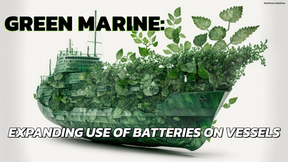Canadian crude exports to the US Gulf Coast are down only a little despite TMX's launch
Shipping tracking data revealed that in June, about 150,000 barrels of Canadian crude per day (bpd), slightly less than the average, were exported to the U.S. Gulf Coast. This was despite the Trans Mountain Pipeline (TMX) expansion, which pushed some barrels towards Vancouver.
The expansion, worth $24.84 billion ($34 billion), began operations in May. It added 590,000 barrels per day of crude oil delivery capacity to the Pacific Coast region of Canada, where it could be loaded on tankers. This gave Canadian producers greater access to markets such as those along the U.S. West Coast or Asia.
TMX could have a significant impact on global oil flows, freight rates, and shipping. If more oil from Canada’s West Coast is shipped to Asia, this would reduce shipments of oil from the U.S. Gulf Coast going to India, China, and South Korea. TMX may also affect the shipments of certain Latin American grades into Asian countries. These countries would have to find a new market.
Data from ship tracking services Kpler & Vortexa shows that two supertankers, as well as two smaller vessels, loaded Canada's Access Western Blend crude and Cold Lake crude grades in June from the U.S. Gulf Coast for delivery to refineries across India, China and Spain.
According to Vortexa, the 150,000 bpd export in June was a significant increase from the average monthly volume of 170,000 bpd over 12 months.
Rohit Rathod, Vortexa analyst, says that the ease with which very large crude carriers can be loaded at the Gulf Coast (VLCCs), a vessel capable of carrying up to 2,000,000 barrels of oil has allowed Canadian exports out of the U.S. Gulf Coast to remain high.
Aframaxes, which typically transport up 800,000 barrels, are restricted to loading about 550,000 barrels in Vancouver due to port draft restrictions.
These vessels must sail to California in order to transfer crude oil to a VLCC, before travelling to Asia. However, U.S. Gulf Coast VLCCs are often loaded just off Galveston.
Reliance Industries shipped 2,000,000 barrels of Canadian crude oil in May to its refinery at Jamnagar in India. The Indian refiner then loaded a supertanker near the Texas coast for delivery in August to India.
COMPETITORS
Wood Mackenzie, a provider of energy data, said that since the TMX began delivering crude oil in late May, westbound volumes have increased by over 300,000 bpd.
Wood Mackenzie analyst Dylan White noted that pipeline monitoring revealed that Enbridge's Mainline, which competes with TMX, was largely unchanged compared to pre-TMX levels in June and early July. This was boosted by the depletion of storage stocks in Western Canada. The Mainline pipe transports crude oil from Canada's Alberta region to the U.S. Midwest.
According to Kpler’s ship tracking data, two loads of 500,000 barrels Cold Lake Blend have already been made from the U.S. Gulf Coast in July. Analysts have noted that a weak Chinese demand could hinder these flows.
White said, "We expect a decline in Canadian flows in the coming months as TMX ramps up and Western Canada's inventory cushion is depleted." (Reporting and editing by Liz Hampton, Marguerita Choy, and Arathy S. Somasekhar from Houston)






